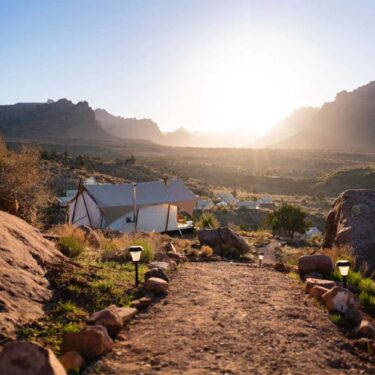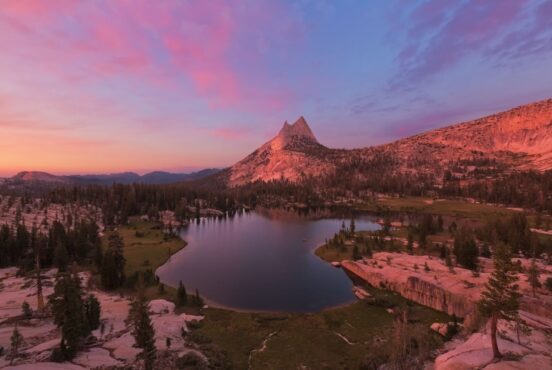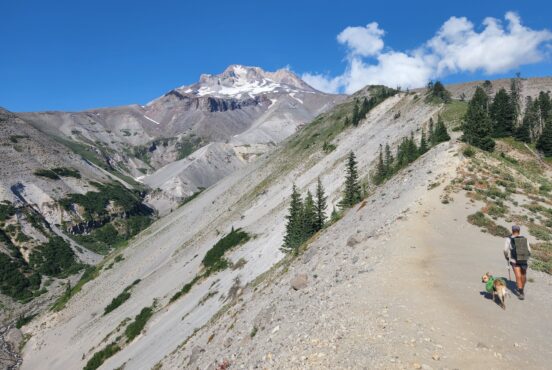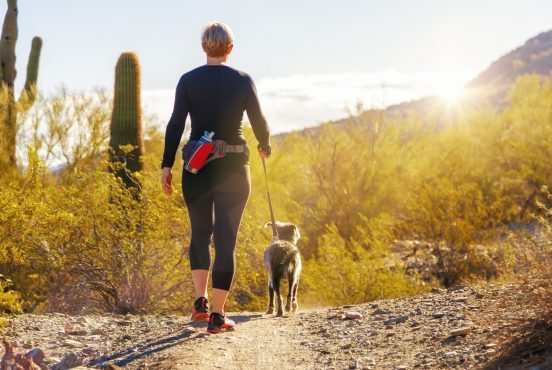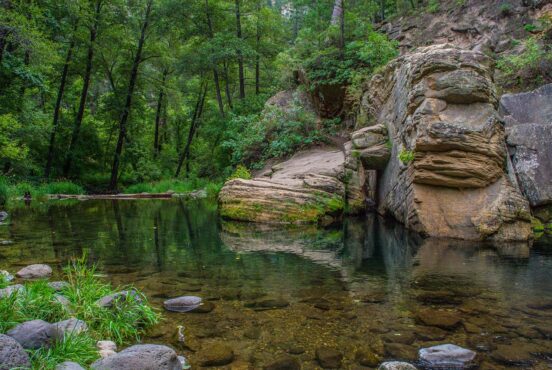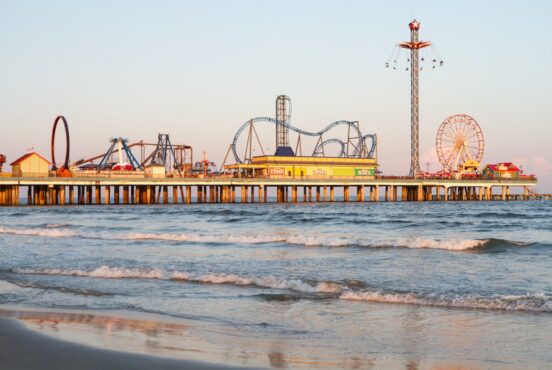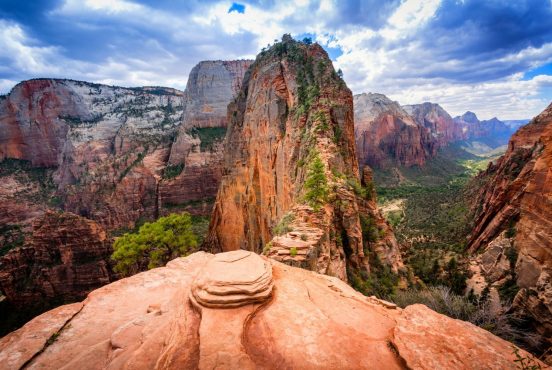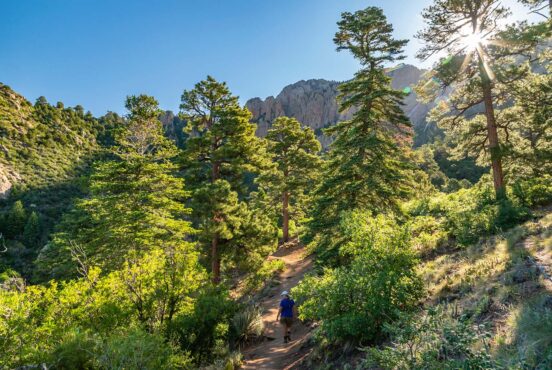Incredible sunsets, endangered wildlife, and death-defying hiking trails are only some of the reasons to visit Zion Utah National Park.
The hike to Angels Landing might be one of the most dangerous trails in the United States, but it won’t be the only place in the Park to make your heart skip a beat. Every glance you take will be more incredible than the last. The red rock canyons are ideal at first light while the soaring condors even better mid-morning. Wade through the crystal waters among the slot canyons at the height of the heat of the day and cap off a day of an adventure at an overlook at sunset.
No matter your ideal itinerary, you’ll find exactly what you’re looking for regardless of season. Whether it’s the solitude in the winter or the backcountry excursions in the summer. Take a roadtrip to fully immerse yourself in the southwest experience from Salt Lake City or in between the famed national parks that call this area home.
Each season brings a different view of Zion — this guide will help you pick the right one for you.
Travel Tips for Zion National Park
- Adventuring all day might be fun but you’ll also need a place to rest your head. Stay at one of these unique Airbnbs or glamping destinations.
- Weather can be cruel anytime of the year in Zion — from torrential downpours during monsoon season, excessive heat in the summer, and below-zero temperatures in the winter.
- Always carry enough water for an entire day’s excursion. The excessively dry heat will leave you constantly parched so come prepared.
- With that said, also have plenty of sun protection. Even in the dead of summer, it’s best to wear long sleeves and long plants, a large-brimmed hat, and plenty of sunscreen. Reapply more than you think!
- Double check that the trailhead you need to access is open. Closures happen often due to rockfalls, floods, and even dangerous cyanobacteria found in water.
- Buy necessary permits in advance especially for the more popular trails that have a newly established permitting system in place to deal with crowds. Trails that need permits include The Subway, Angel’s Landing, The Narrows, and more.
- Zion is popular and as such, parking can be difficult if allowed at all. The Zion Shuttle is operated almost year-round (February to November) and is obligatory to use when running.
- Bring your own food as there is only one place in the Park that sells anything (it’s the Zion Lodge).
Best Time of Year to Visit Zion
There’s a reason that Zion has over four million visitors a year; it’s one of the most beautiful places in the United States. Either go when crowds are minimal or to ensure that the trails you want to hike are open. Here are the best things to do in each season within the Park.
Related Read: 8 Unforgettable Romantic Getaways in Utah
Autumn: Best Time for Wading
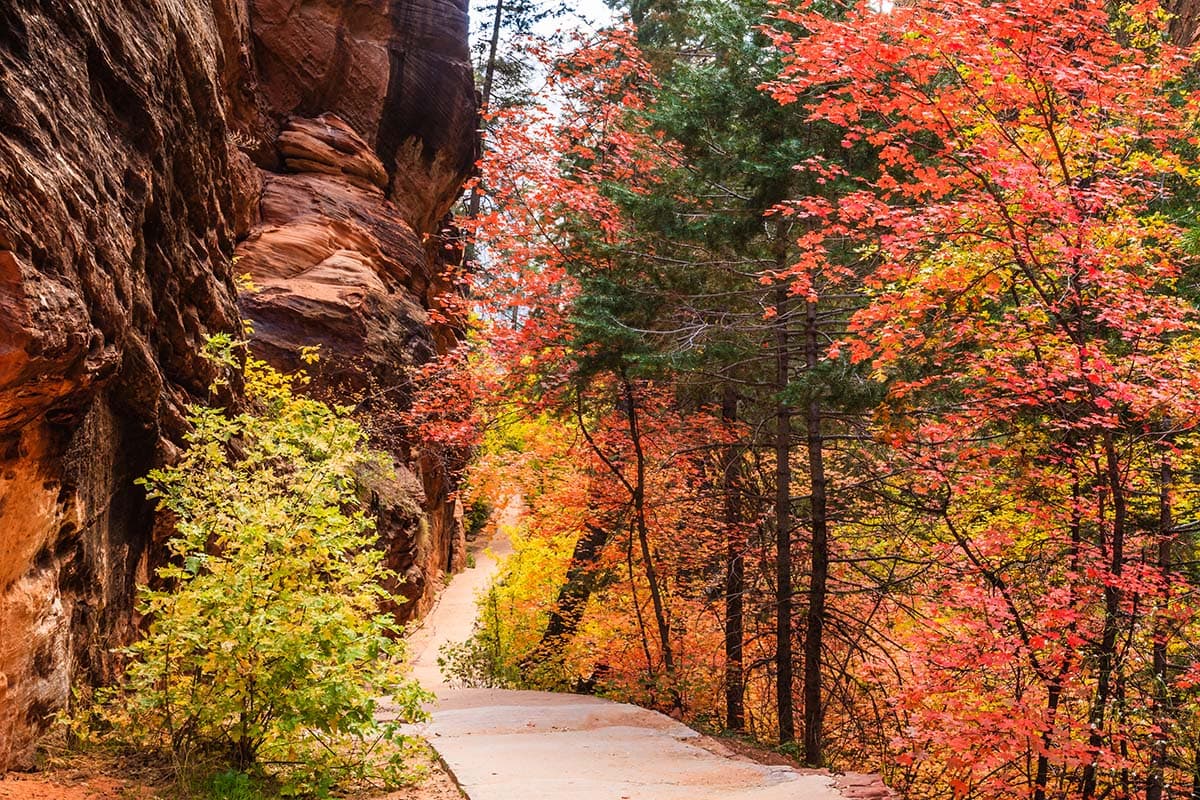
It’s not a surprise that Zion means “sanctuary” and it’s especially true in the autumn months. While all the kids are headed back to school, you can head into a near desolate park. Trails are significantly less crowded than the summer and provide you with ideal temperatures to venture onto the more exposed areas of the Park. But be warned that temperatures in early autumn can still reach to 90 degrees Fahrenheit and get well below freezing later in the season.
Although the temperatures won’t necessarily be scorching hot, autumn is still a great time to wade through the waters of The Narrows. This hike is one of the most popular in the Park but once the temperatures plummet, the crowds disperse. With that said, come prepared with a dry suit on cooler autumn days to ensure you won’t suffer from hypothermia.
The risk of flash floods is much lower this time of year too since monsoon season is typically from mid-July to early September. But that doesn’t mean these catastrophic events don’t occur. Always remember to check the weather prior to any hike in The Narrows. If rain is predicted in the surrounding area, do not attempt this hike.
INSIDER TIP: come for Utah’s premier musical festival at Zion Canyon which typically occurs the third weekend of September.
Winter: Best Time for a Scenic Drive
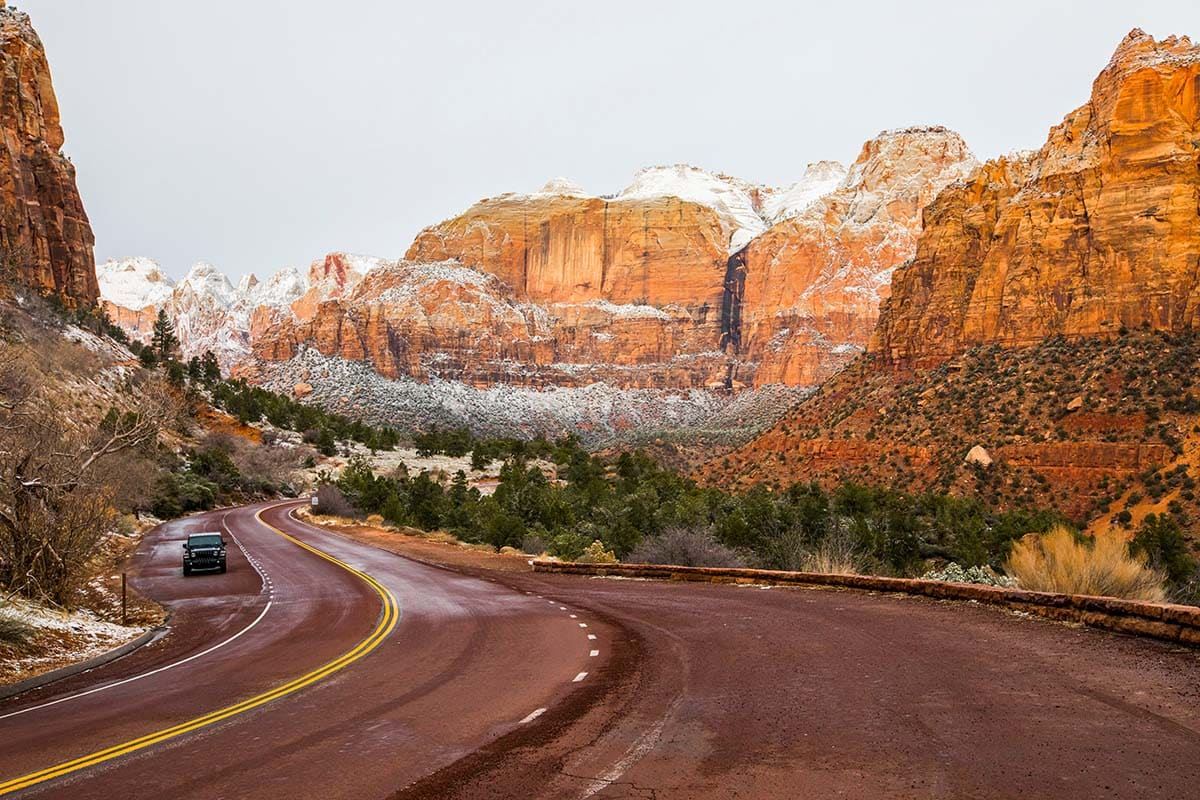
Unlike a lot of other national park trails, most trails in Zion are open in the winter months. Trails usually close only because of potential ice falls or dangerous conditions. But for the most part, Zion’s trails are a “use at your own risk” sort of experience.
If hiking is your prerogative, then winter a great time to visit. But what’s especially nice about the wintertime in Zion is the lack of a Park shuttle. This means you can drive and park in any of the designated areas within the Park boundary. No more waiting in lines to grab the next shuttle or having multiple stops before you get to your destination. Just simply get in your car and drive!
One of the best drives is the Zion-Mt. Carmel Highway and Tunnel that stretches ten miles from the Park entrance to Mt. Carmel. You can make this a 54-mile trip if you do the entire thing from the intersection of Highway 9 and Interstate 15 to Mt. Carmel. You’ll pass through the town of Hurricane, Virgin, Rockville, and Springdale.
The highway meanders up and down switchbacks within the Park and over to the Checkerboard Mesa section and through the mile-long tunnel carved in the sandstone rock. Make sure to stop outside of Rockville at the Grafton ghost town which was featured in Butch Cassidy and the Sundance Kid!
Be careful if it’s getting towards the end of the day (or early in the morning for that matter) since the tunnel is only open from 8 am until 4:30 pm during the winter.
INSIDER TIP: if you come for New Year’s Eve, you’ll experience fireworks in Zion Canyon and it’s epic! Also, there’s usually square dancing involved.
Related Read: 12 Gorgeous Cabin Rentals Near Zion National Park, Utah
Spring: Best Time to Sit Amongst the Angels
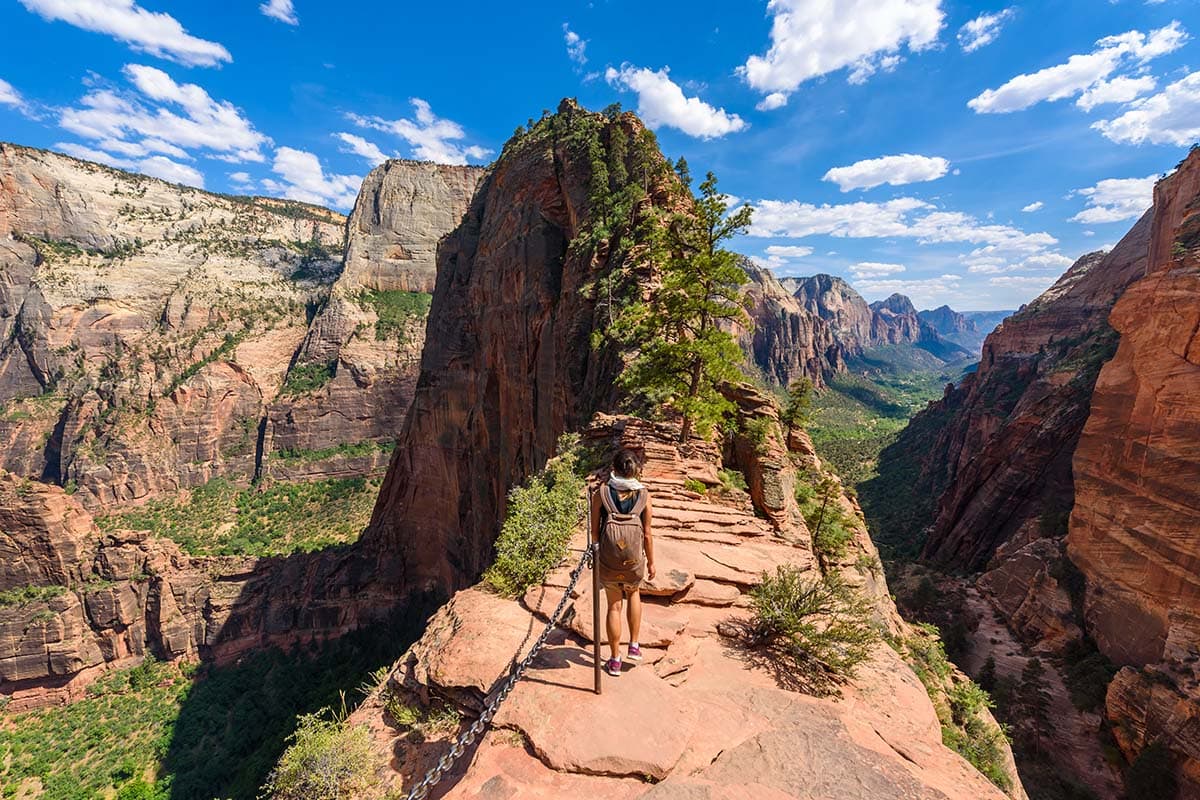
Zion is filled with many waterbodies throughout its boundary including the Virgin River (where The Narrows trail wades through), Emerald Pools, and even a Weeping Rock. Just like in many other places, springtime tends to bring seasonal rains and large snow runoff that bombards the Park’s waterbodies within its border.
This means that hiking in or even near water can sometimes be quite dangerous. The Park is even known to close trails due to high water. The Narrows closes when water flow is over 150 cubic feet per second which is typically the case for the entirety of springtime.
So this means you should find higher ground! Snow will have begun to melt the more exposed and south-facing trails. Why not head up to the famed Angels Landing for a springtime adventure! Crowds are significantly smaller and you’ll likely snag a coveted permit for a springtime excursion. Just be careful on the ledges that are north-facing and still have snow/ice covering the path. It’s always recommended to bring traction and if you feel unsafe, turn around. The hike is never worth your life!
INSIDER TIP: avoid going during spring break, which is typically mid-to-late March.
Summer: Best Time for Remote Excursions
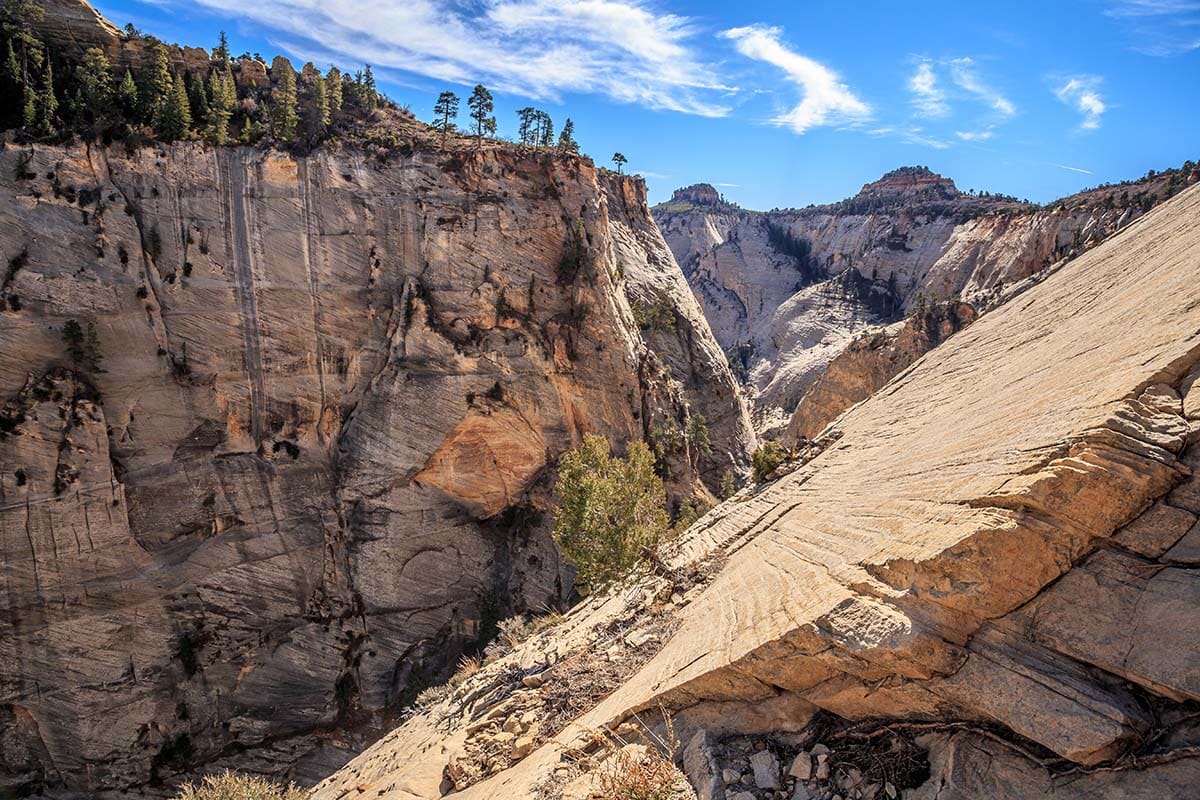
Summer is, by far, the most popular time to visit Zion National Park. Despite the sweltering heat, hordes of visitors come to see the majesty of Zion in all its glory. But just because it might be extremely crowded, doesn’t mean you won’t have a great time or won’t be able to find a little solitude.
You can always head up to the more popular hikes within the Park but your best bet for some peace and quiet is to venture further out. There are several options for you to pick from. First being to head to the lesser known Kolob Canyon area. It’s not accessed through the main part of the Park and is, instead, at the northwestern edge of the Park. The entire region of Kolob Canyons is considered wilderness and has over 20 miles of hiking trails for you to spread out.
Venturing on a multiple-day backpacking trip is another great way to get away from the crowds during the peak season. Some of the favorite backpacking trips include the West Rim Trail, Chinle Trail, and La Verkin Creek Trail. Or you could always snag the highly sought-after permit and do the day hike for The Subway. The National Park Service only allows 60 permits per day so you won’t see nearly as many people as the other trails within the Park.
Besides special permits for certain hikes, any wilderness backpacking trips will also need a permit. These can easily be obtained at the Visitor Center. It’s also highly recommended to reserve a campsite ahead of time. Half of the campsites are available for online reservations where the other half is reserved for those as a walk-in. It’s up to you whether or not you should chance it.
INSIDER TIP: if the crowds are too overwhelming for you, head east to Grand Staircase-Escalante National Monument where the hikes are similar — but without the crowds!
Explore Utah!
Get epic travel ideas delivered to your inbox with Weekend Wanderer, our newsletter inspiring more than 10,000 readers every week.
Seen in: Destinations, National Parks, Southwest, Utah, West, Zion National Park

